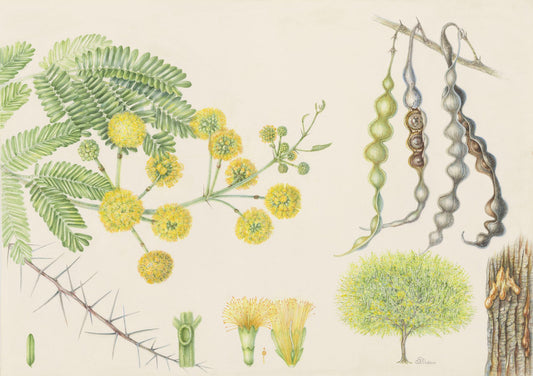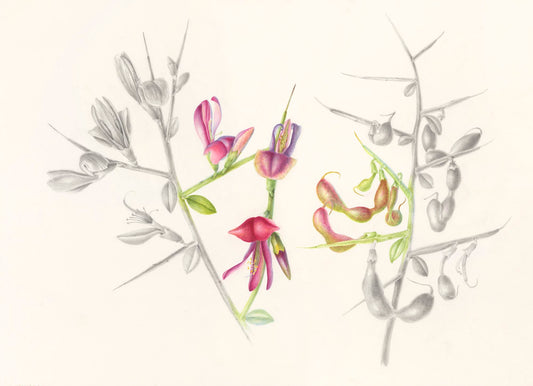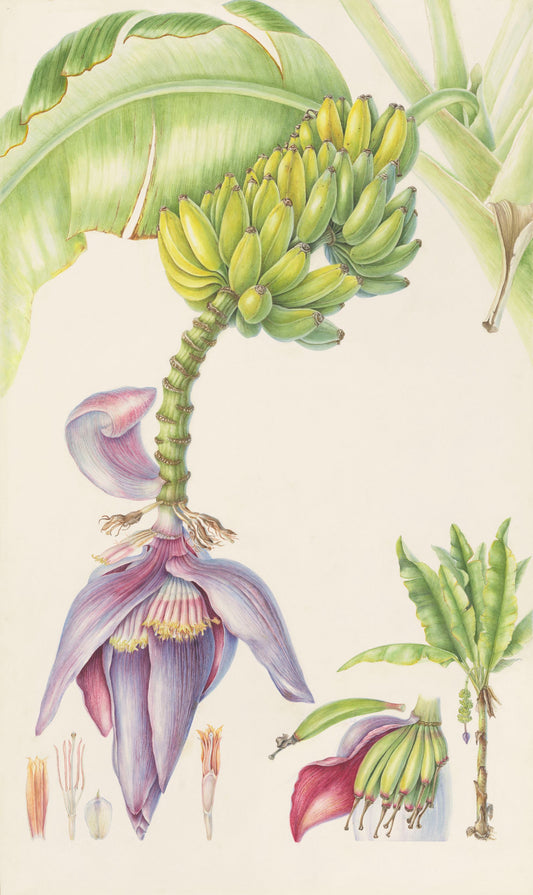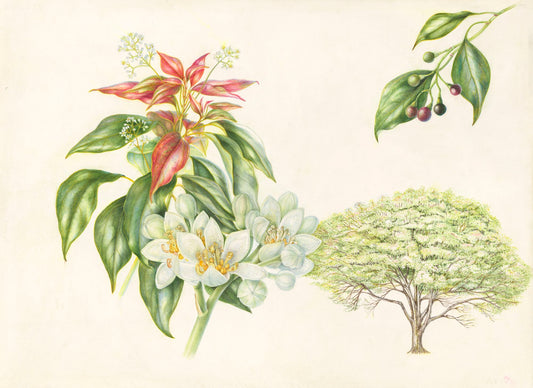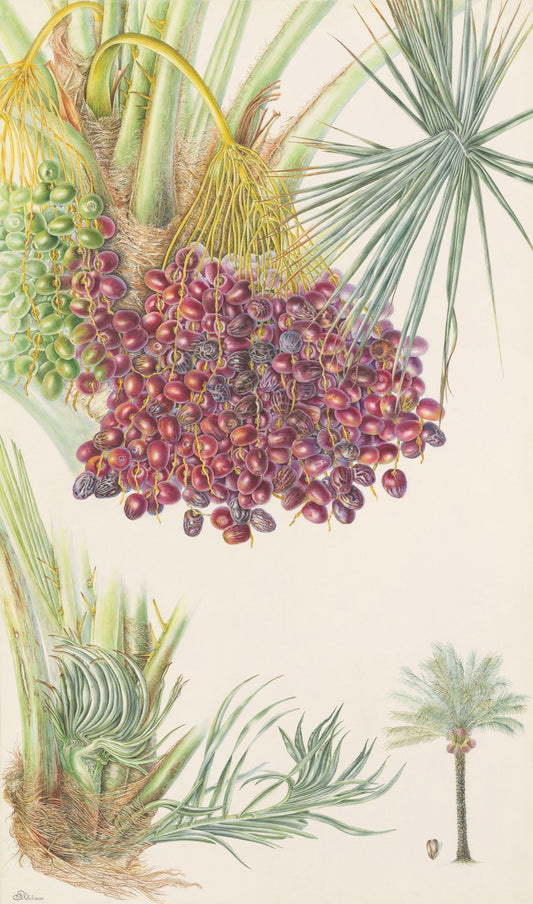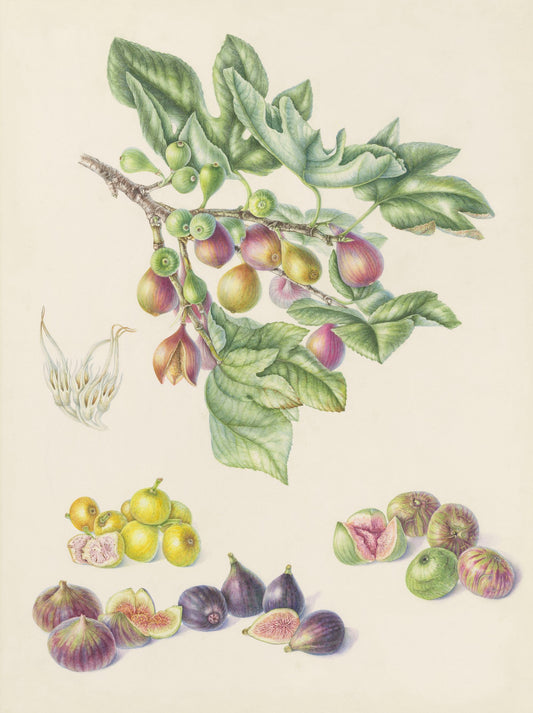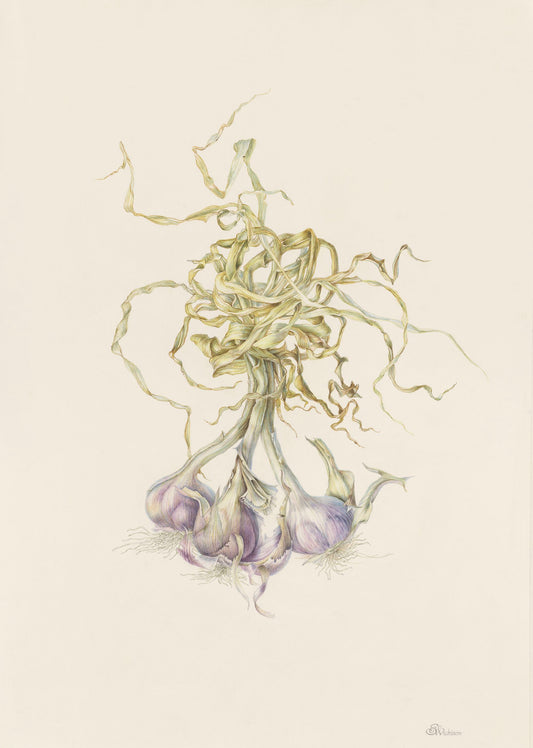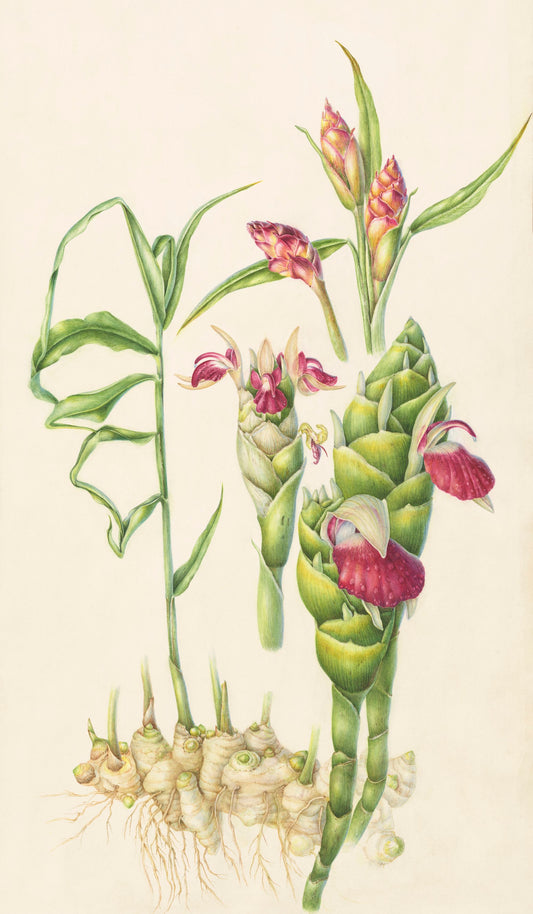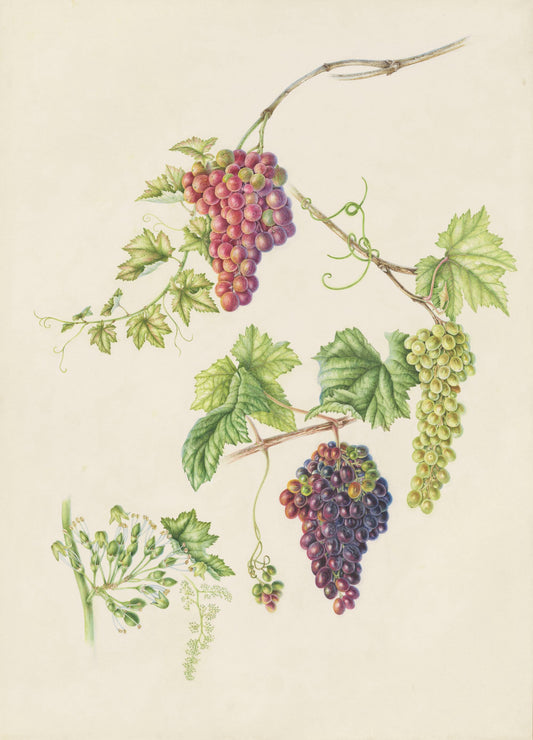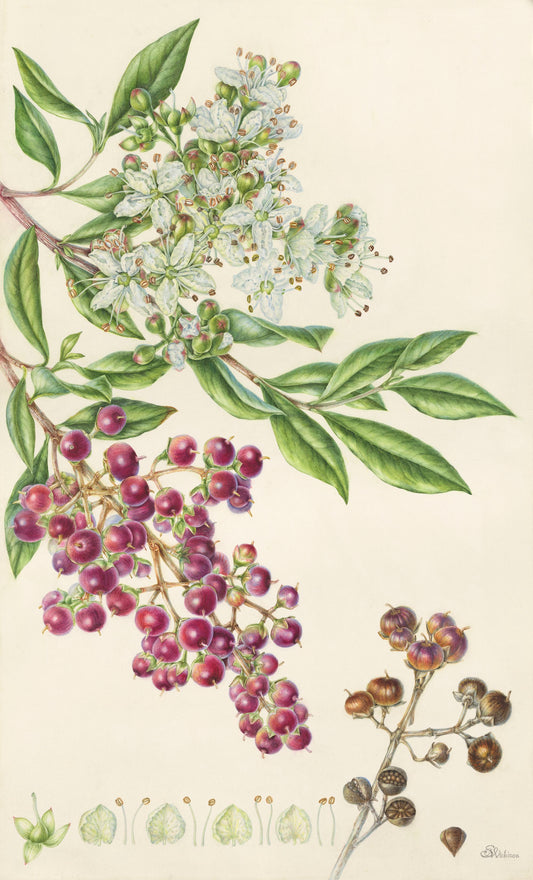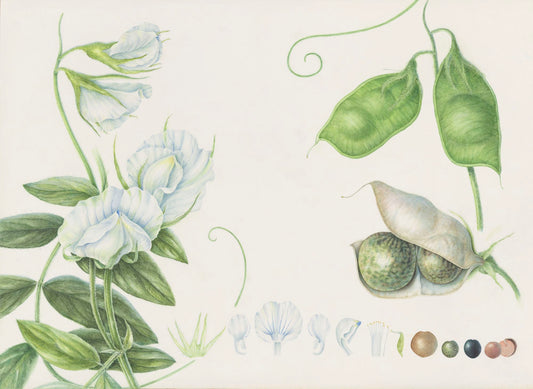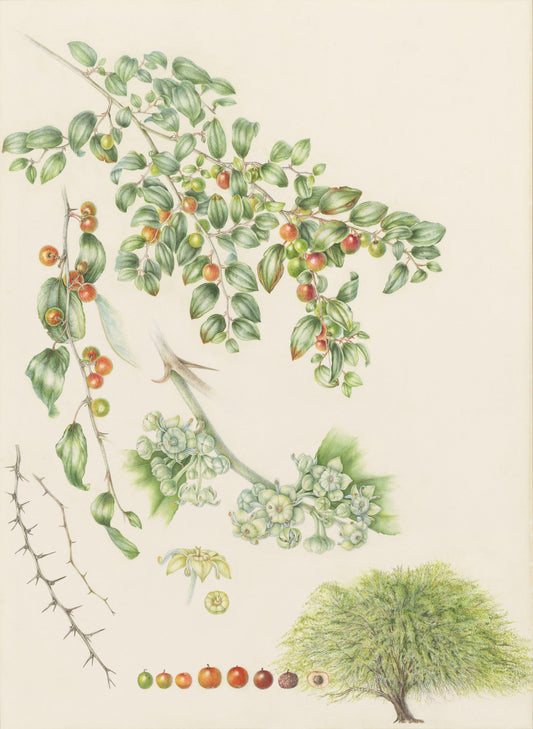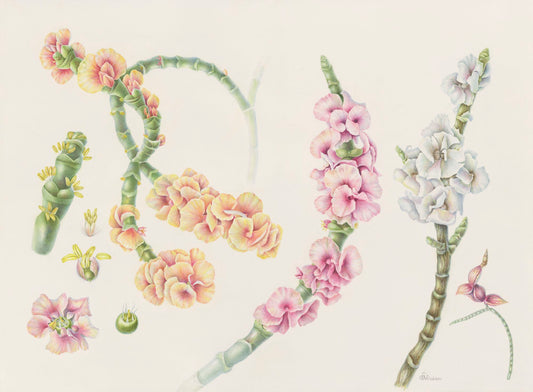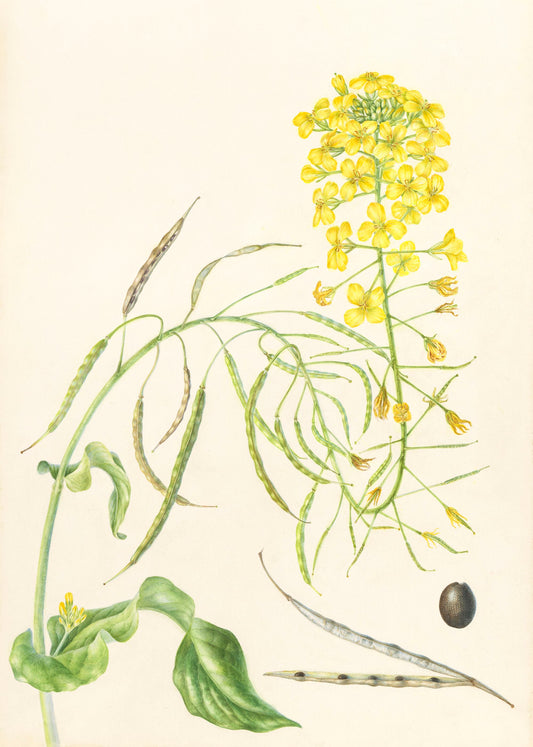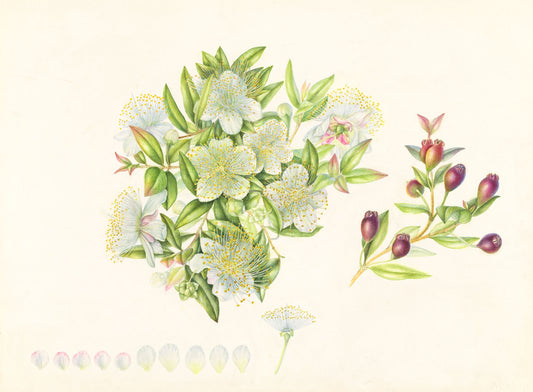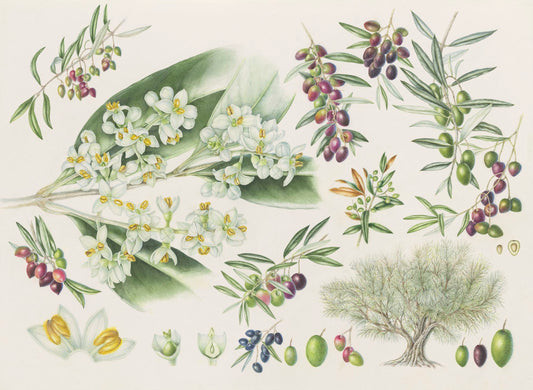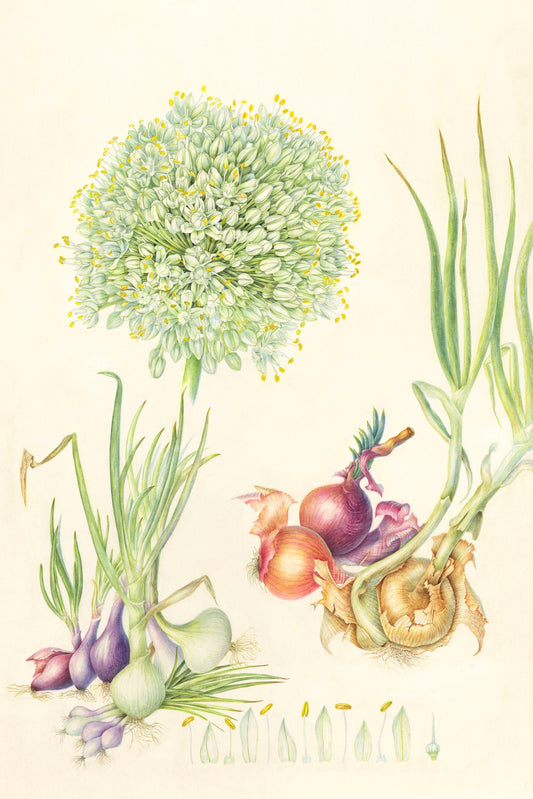

Plants of the Qur’ān
About the Project and its Authors
Plants of the Qur’ān - History and Culture, published by Kew Publishing, investigates the etymology and history of the plants mentioned in the Holy Qur’ān.
It illustrates the historical and present cultural significance, traditional and present uses, and explores the context in which plants are mentioned in the text of the Qur’ān.
Several plants are mentioned in the Qur’ān that have a history of use as food, medicine or have value for a particular characteristic they hold.
All the plants mentioned in the Qur’ān are significant not only in that they are useful to everyday life, but because they have a historical, cultural and religious connotation. The very mention of some plants in the Qur’ān signifies their importance and relevance as they are known either for their use (such as date, onion, garlic, olive, grape, fig, pomegranate, lentil, ginger, mustard) or as a reference to their character or what they might denote (such as tamarisk, henna, sidr). Following research on the book , some new plants have been introduced and the book discusses about 30 different species , like the Ethiopian banana, Castor oil and Myrtle.
Through global climate change and human impact on the environment, natural habitats of many plant communities and animals are being lost or have changed with the result that many plant species can no longer survive in their native areas of distribution. The loss of a species means that there is also a loss of history and culture that is associated with it in its native environment. It is true that plants can be cultivated and saved from extinction, but the cultural history which a plant carries with it in its native habitat cannot be carried on through cultivation in another place. Plants of the Qur’ān also advocates the conservation and sustainable use of plants and their habitats as much as it stresses their research and investigation.
Independently of each other two people had the same thought – as small as a mustard seed that through friendship has grown and resulted in a collaboration of minds and skills. Dr Shahina Ghazanfar of the Royal Botanic Gardens Kew and Sue Wickison freelance Scientific Illustrator have pooled inspiration and resources to work together on a project to research and record in a book format the plant species that are mentioned in the Holy Qur’ān. There are several works written on the topic, but none that is a comprehensive illustrated collection of the plants.
This is a unique opportunity and a project that allows an historical document to be created. However small the plants are, it is a chance to highlight their valuable uses, whether as medicinal plants or food crops or just to be appreciated and enjoyed.

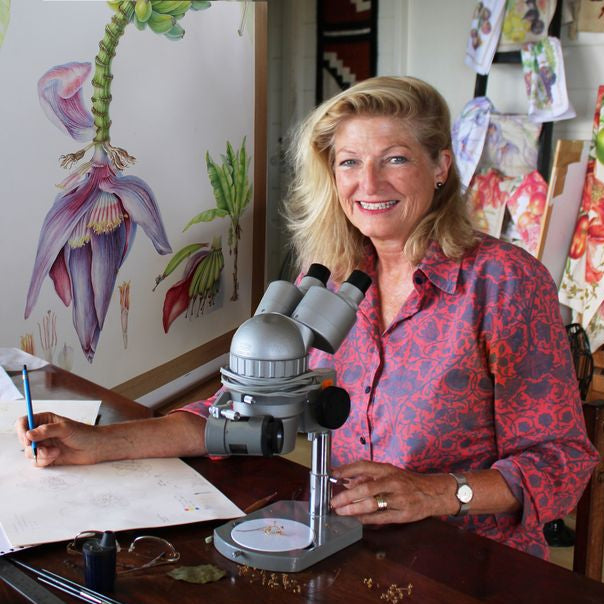
About
Sue Wickison
Born and brought up in Sierra Leone, West Africa, I was taught from an early age to be aware of the bush and tell the difference between plants, which nurtured the love of nature and established observational skills that would be the foundation of my knowledge in later years.
A degree in Scientific Illustration led to nine years at the Royal Botanic Gardens, Kew, London working in the Herbarium on Grasses, Legumes and Orchids which continued the fascination to learn and observe.
Years later, in 2015, a chance visit to the Grand Mosque in Abu Dhabi UAE was a breath-taking experience. Extensive botanical motifs all around the exquisite Mosque raised questions about the origin and history of the plants used. Realising a gap in information, the germ of the idea about working on the plants of the Holy Qur’an was born.
Working from living material was always my main criteria and is essential for accuracy and authenticity. Finding the correct species and the heritage variety took me on a fascinating journey including the deserts in the UAE to see tiny 1mm flowers on what seemed insignificant succulent stems that turned out to be intriguing and colourful under the microscope. The message was not to be fooled by first impressions as looking in depth often brings out the fascination and beauty of nature.
Travelling to remote communities in the Hajar mountains of Oman to see how food plants have been grown for generations and viewing the co-operation of sharing water through the ancient Falaj system of stone channels bringing water down from the mountains to irrigate farms collectively, was a system in sharing to be admired.
Mediterranean olives, Moroccan figs, dates from Sharjah, garlic and pomegranate from Oman, Ethiopian bananas, the toothbrush tree from Dubai and home-grown lentils from New Zealand were some of the treasures. Every plant had its challenges – from tiny millimetre flowers to large palm trees – all were part of the jigsaw puzzle.
Each painting took months to complete – the research, travel to different countries, field notes, preliminary sketches and colour notes needed to fully understand the plant species and its characteristics were the precursors to composition, design and the final illustration. Drawing 1 mm scales on the male cones of the Cedar of Lebanon, tiny hairs on Tamarisk seeds, transparent arils of pomegranate seeds or hundreds of dates; all had their challenges and rewards.
Speaking to a friend recently resonated with me as she related the seed from the date palm to the strength of her Muslim faith and told me about the Fateel, the thread or funicle that joins the seed to the inner side of the fruit and the Qitmeer or protective sheath around the seed. I was aware of both which she used as a unit of measurement from the Qur’an to judge deeds good or bad – relevant however small.
Then she mentioned an even smaller aspect of the seed the Naqeer or dimple in the seed which I was not aware of. So, in the interests of science, I had to eat a few more delicious dates and sure enough this tiny dimple was there – but how had I missed something so important? A measure of good deeds or the actual point of emerging germination?!
I learnt from that moment to look even more carefully and that regardless of our creed or culture, close observation, whether spoken, written or drawn is the common thread between all of us and is our strength to share and impart information for the betterment of all.
My fascinating journey culminated after eight years in a five month long solo show at Kew, and the book publication with Shahina and Kew. Receiving the Jill Smythies award from the Linnean Society in my opinion recognized the calibre of botanists I have been lucky to work with over the years, – so a humbling joint effort. I could not have achieved what I have without the help and generosity of spirit of so many others around the world, so I thank all.

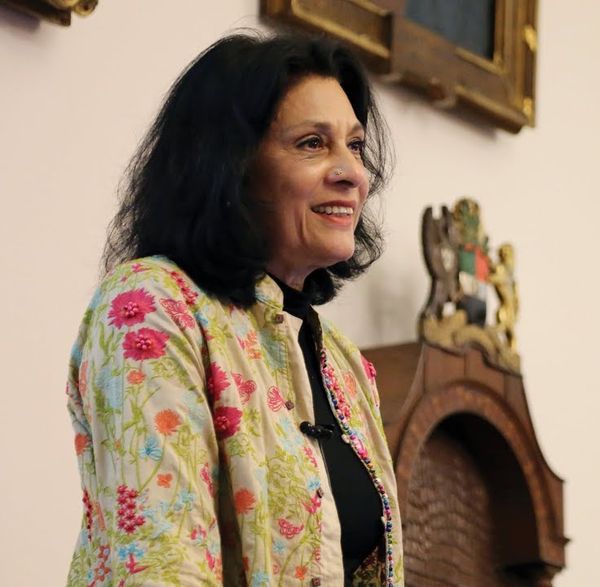
About
Dr. Shahina A. Ghazanfar
Shahina Ghazanfar was educated at the Universities of Punjab and Cambridge, and has been based at the Royal Botanic Gardens, Kew, since 2001. She is co-editor of the Flora of Tropical East Africa, a detailed taxonomic account of the roughly 12,000 plant species found in Uganda, Kenya, and Tanzania, for which she researched and wrote the account of the family Scrophulariaceae. She also co-organised, and edited the proceedings, of the 17th AETFAT Congress in Addis Ababa in 2003
Her main areas of research are the systematics, vegetation, and biogeography of Oman, Arabia, and Pakistan. She has published a detailed account of the biochemistry and usage of Arabian medicinal plants and is the author of the first ever Flora of Oman. As an expert on the Arabian Peninsula, she is often consulted on its native flora, medicinal and perfume plants, and since 1992 has made numerous environmental assessments of development projects and proposed nature reserves in the region.
In addition to writing and editing scientific publications, she is an accomplished botanical artist who has illustrated most of her books and all her research papers. The British Council in Oman mounted a solo exhibition of her watercolours in 1993.
Shahina Ghazanfar is on the editorial board of Systematics and Geography of Plants, and a member of the Linnean Society, AETFAT, IAPT, the Society for Arabian Studies, the Society of Economic Botany, and the Arabian Plant Specialist Group of the Species Survival Commission, IUCN.
Dr. Ghazanfar started her career as a lecturer in botany at Kinnaire College, Lahore, and at SUNY Syracuse, before joining the National Herbarium in Islamabad as a herbarium curator and researcher on the Flora of Pakistan. For her doctoral research at Cambridge, she revised the genus Silene L. sections Siphonomorpha Otth. and Auriculatae (Boiss.) Schischk. She left the National Herbarium in 1983 to take up a lectureship at Bayero University, Nigeria, where as well as lecturing she was keeper of the botanical garden and founding curator of the university herbarium, which specialises in collections from northern Nigeria.
From 1987 until 1997, she was an associate professor at Sultan Qaboos University in Oman. There she created the country's second herbarium, housing some 4,000 accessioned specimens and a good collection of medicinal plants and lichens. She also gave curatorial assistance to its principal herbarium, the National Herbarium of Oman, which is located in the Museum of Natural History, and edited newsletters for the Horticultural Association of Oman and the Historical Association of Oman.From 1997 to 1999, she was funded by Cambridge University and DAAD to study the systematics, ethnobotany, and conservation status of the flora of the Arabian Peninsula. Afterwards she went to Fiji as a lecturer and researcher at the University of the South Pacific in Suva, and while there she conducted a vegetation survey of the smaller islands. She returned to Cambridge in 2001 as an Academic visitor to the Department of Plant Sciences at its Downing site and later that year she took up her current position at Kew.
Discover the collection
-
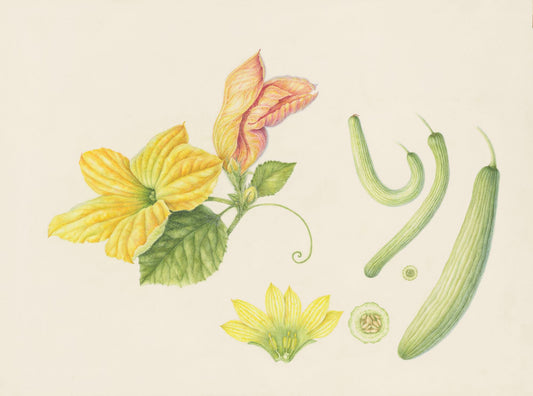 Sold out
Sold outArmenian cucumber
Regular price $0.00Regular priceUnit price / per -
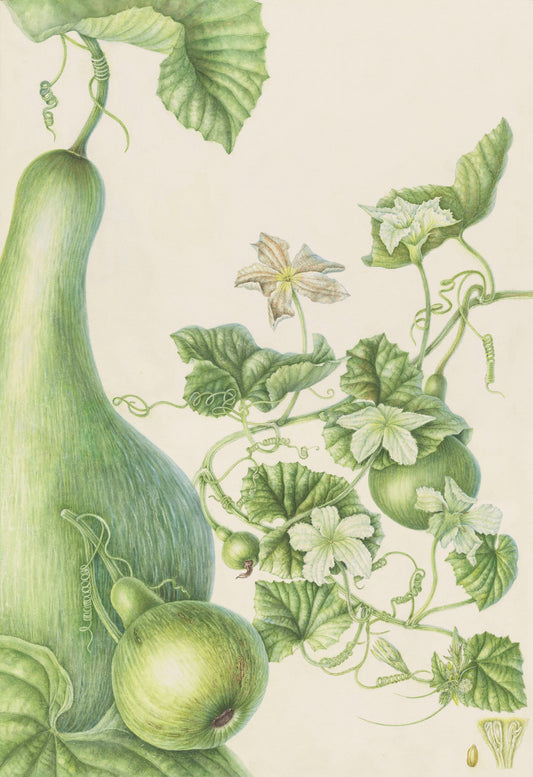 Sold out
Sold outBottle Gourd
Regular price $0.00Regular priceUnit price / per -
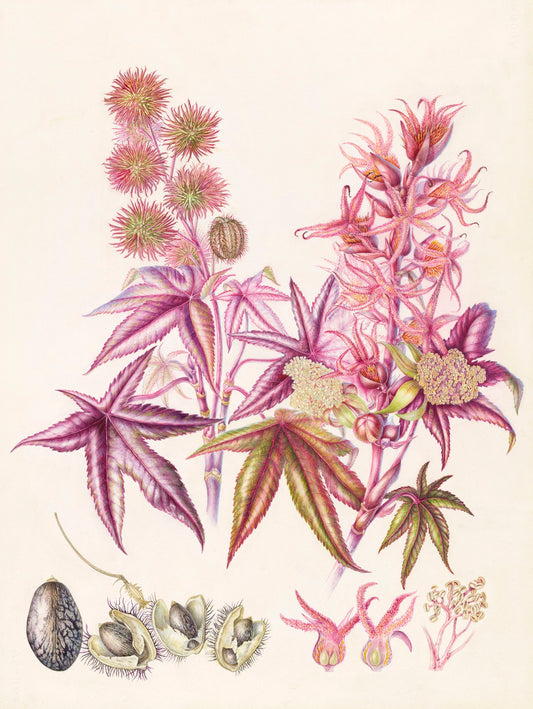 Sold out
Sold outCastor Oil
Regular price $0.00Regular priceUnit price / per -
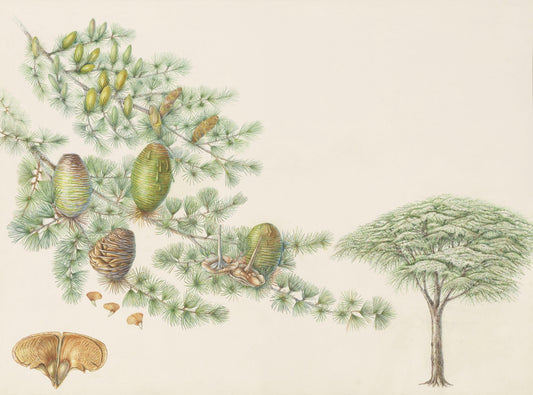 Sold out
Sold outCedar of Lebanon
Regular price $0.00Regular priceUnit price / per -
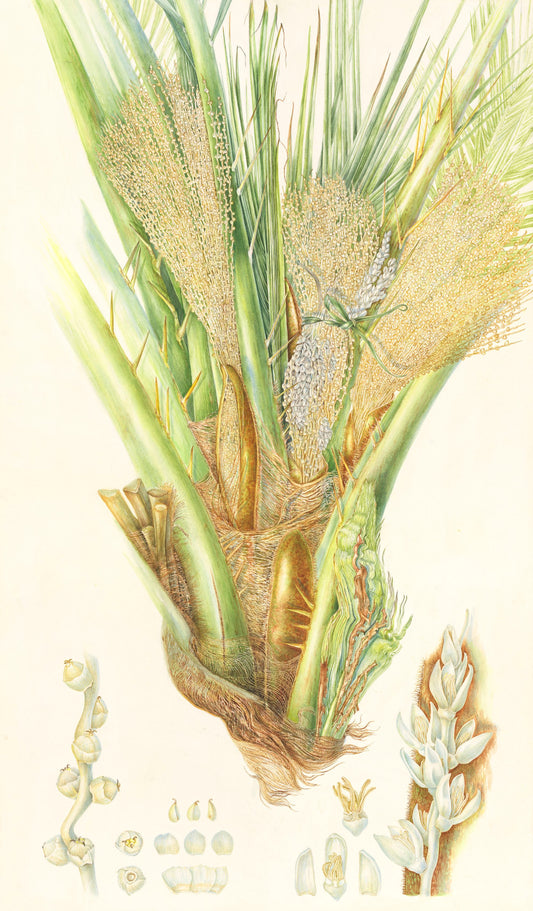 Sold out
Sold outDate Palm Flowers
Regular price $0.00Regular priceUnit price / per -
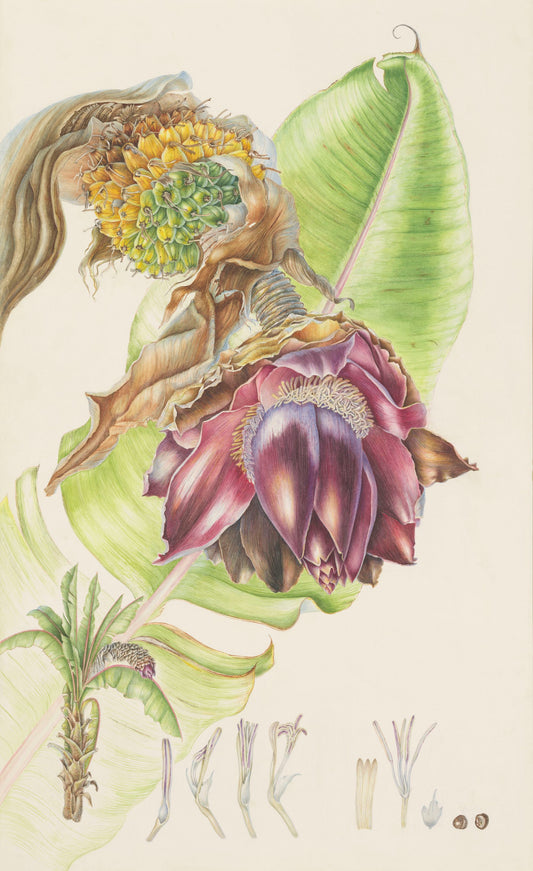 Sold out
Sold outEthiopian False Banana
Regular price $0.00Regular priceUnit price / per -
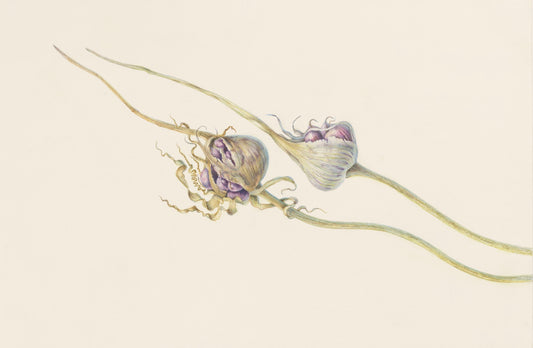 Sold out
Sold outGarlic Bulb
Regular price $0.00Regular priceUnit price / per -
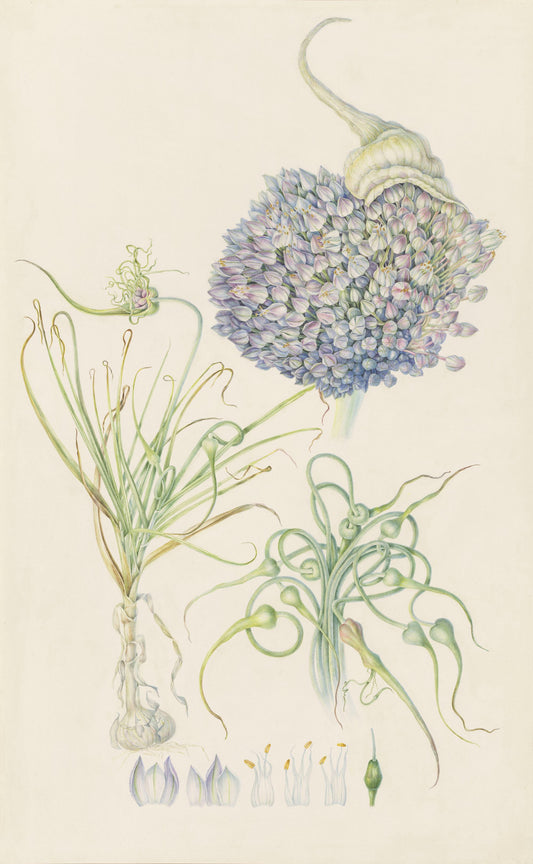 Sold out
Sold outGarlic Flowers
Regular price $0.00Regular priceUnit price / per


